We catch up with 2019 SPAB Scholar Holly Spilsbury, who's working to repair this church with Pearce Bottomley Architects.
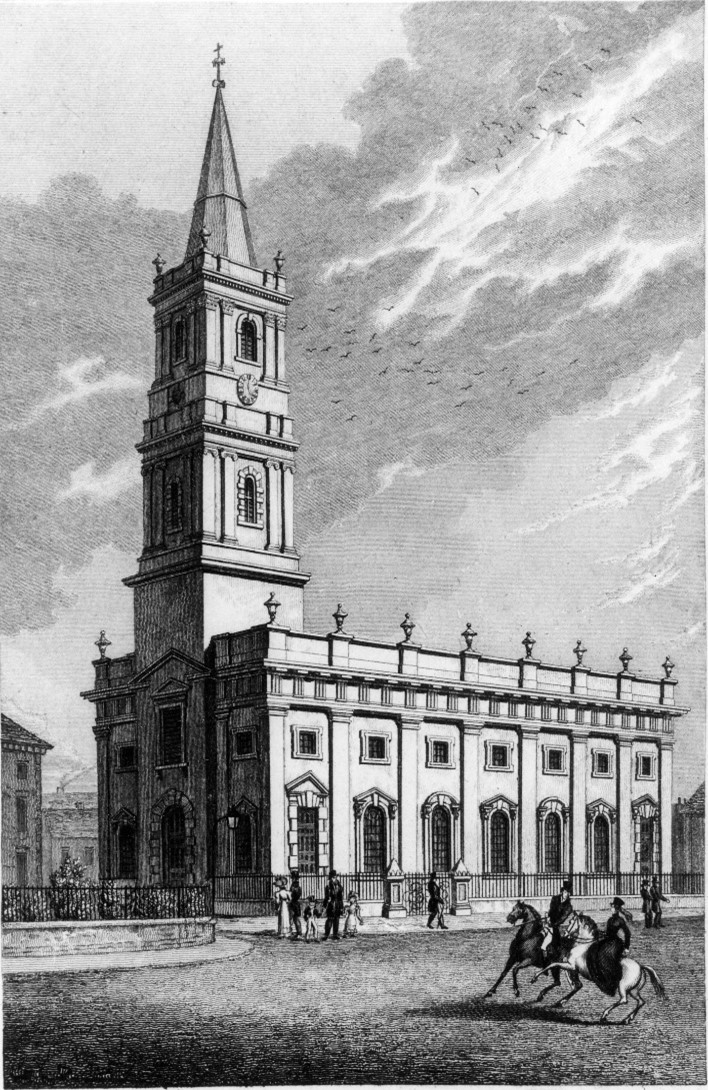 ‘Etty’s Holy Trinity Church still stands on Boar Lane as testament to the urbane taste and sophistication of early 18th century Leeds’. (Wrathmell 2005, author of the new Pevsner Architectural Guide to Leeds).
‘Etty’s Holy Trinity Church still stands on Boar Lane as testament to the urbane taste and sophistication of early 18th century Leeds’. (Wrathmell 2005, author of the new Pevsner Architectural Guide to Leeds).
I recently visited the Church of the Holy Trinity in Leeds for a tour of the current conservation works being carried out to the building. The project, led by Pearce Bottomley Architects, involves repairs to the fabric, internal repairs, refurbishment and upgrading services to enable more flexible use of the space. The aim of the project is to conserve the existing building and turn it into a centre of worship, prayer and an event space for people who work and live in the City Centre. The aim is to open in early 2021. This visit not only gave me a chance to see a live project which began and continued throughout lockdown but also to delve into the history of Leeds and understand the relationship of the buildings to the vibrant city.
History & Setting
Holy Trinity is a Grade I listed church which sits right in the heart of Leeds City Centre as a cherished landmark. It was designed by architect William Etty (1675-1734) in 1727. A generous portion of the funding was donated by Lady Elizabeth Hastings, of the nearby Ledston Hall. However, the real driving force behind the construction of the church can be attributed to the local merchants who initiated and funded the project. The brackets of the downpipes are stamped with sheep as a reminder of the source of the wealth of many of the merchants who built the church.
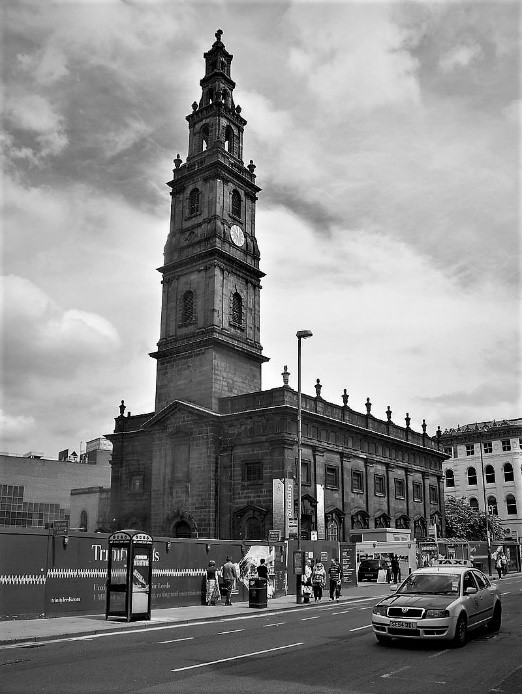 In 2013, after facing a diminishing congregation and the arts and cultural uses of the building dwindling, a reordering project was carried out. In the same year the adjacent Trinity Shopping Centre was constructed. For a short period during construction, the openness of the site around the church returned and gave an impression of the setting of the church from earlier times. Although the breathing space around the church is now significantly reduced, and despite the recent additions to the skyline, Holy Trinity has remained an iconic shape within the city.
In 2013, after facing a diminishing congregation and the arts and cultural uses of the building dwindling, a reordering project was carried out. In the same year the adjacent Trinity Shopping Centre was constructed. For a short period during construction, the openness of the site around the church returned and gave an impression of the setting of the church from earlier times. Although the breathing space around the church is now significantly reduced, and despite the recent additions to the skyline, Holy Trinity has remained an iconic shape within the city.
The Georgian Church has a long tradition of support for music and the homeless in Leeds City Centre. There have been many examples of musical events being held in the church, including the Handel Festivals. Charities used the church for their activities, including charities who support those with mental and physical health challenges. However, its spiritual presence has faded over the past decade, with almost all religious activity ceasing in recent years. The church has been at risk of closure on several occasions from as early as 1868. Demolition was even considered in the 1950s, a proposal that led John Betjeman to protest: he extolled the church as: ‘The St Martin-in-the-Fields of those crowded industrial streets’.
The project
The conservation project includes repairs to the external fabric of the building and repairs and refurbishment of the interior. This will enable the church to progress exciting plans to host a new midweek ministry for Leeds from 2021, as well as many other events and uses. The Project is funded by the Church of England’s Strategic Development Fund (SDF) to bring new and different ways of worship to churches within large urban areas.
The interior consists of a six-bay nave, side aisles and a short chancel, with a sanctuary within the shallow apse dominated by a large Venetian window. Giant Corinthian columns support a tunnel-vaulted ceiling with plasterwork motifs including a Greek key pattern. Interior works include improving accessibility with ramps for universal access, new sound technology and audio-visual installation, upgraded fire detection, power and a new lighting scheme that will enhance the interior space by illuminating the carefully cleaned monuments and Georgian features.
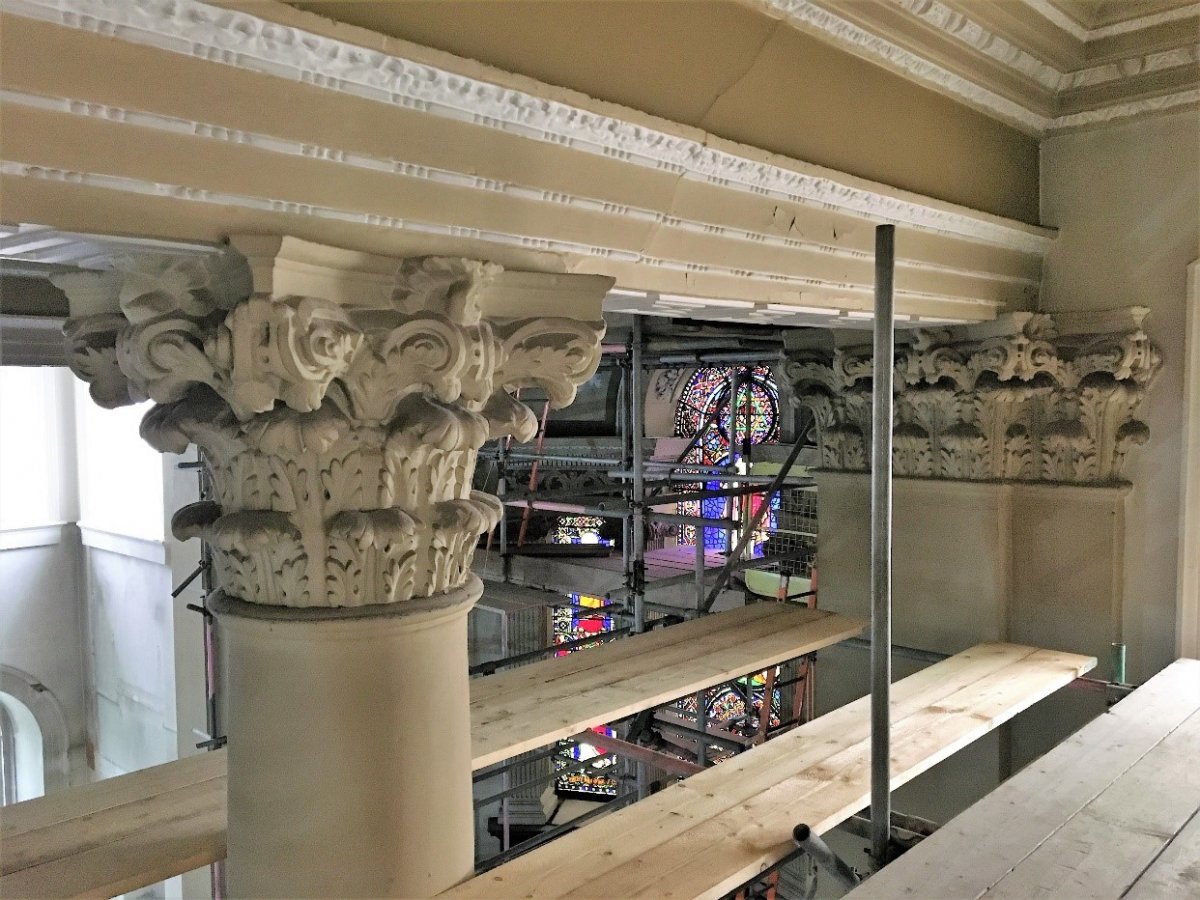
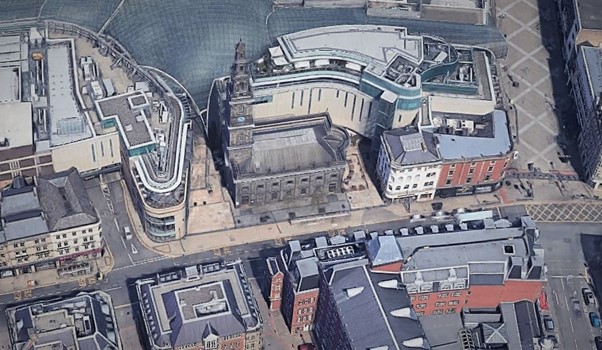
External works include new discreet floodlighting for the whole of the exterior, repairs to the fabric, cleaning and repointing of stonework. Holy Trinity is built from monumental Meanwood millstone grit ashlar, and during the summer a Doff cleaning system was used to clean the stone gently. It will never return to the buff yellow it once was, nor is that the intention, but the cleaning has lifted the blackening from pollution and enhanced the colour of the stone to reveal its subtle honey-coloured tones.
The project began on site in May during the lockdown restrictions and has continued uninterrupted by the ongoing pandemic. Although the current situation has caused great detriment to many building projects, Holy Trinity has experienced a number of benefits such as the reduction in traffic and pedestrians which has enabled clearer access to the building.
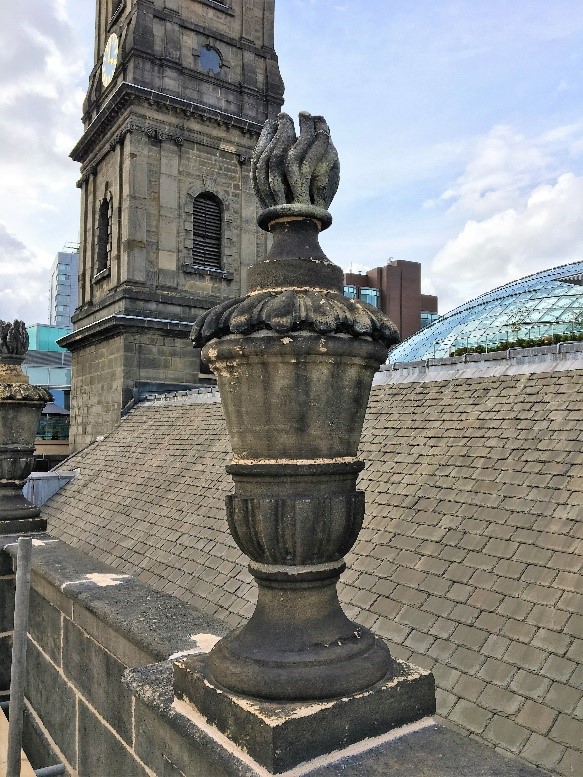 The repairs to the stonework have been minimal, the gritstone ashlar walling was gently defrassed with a wire brush to remove loose material, being careful only to remove the base material at risk of falling. The urns located on top of the parapet wall had previously been repaired with cement and resins. To remove these harmful materials would mean dismantling each urn and potentially causing further damage. The decision was taken only to carry out the necessary repairs to ensure the urns stability and to retain them in situ. As the repair works to the external fabric are nearing completion the residents of Leeds may not notice a drastic change to the building but its future is secured for the next generation and hopefully more people will walk through its doors.
The repairs to the stonework have been minimal, the gritstone ashlar walling was gently defrassed with a wire brush to remove loose material, being careful only to remove the base material at risk of falling. The urns located on top of the parapet wall had previously been repaired with cement and resins. To remove these harmful materials would mean dismantling each urn and potentially causing further damage. The decision was taken only to carry out the necessary repairs to ensure the urns stability and to retain them in situ. As the repair works to the external fabric are nearing completion the residents of Leeds may not notice a drastic change to the building but its future is secured for the next generation and hopefully more people will walk through its doors.
The refurbishment provides a challenge and an opportunity. The challenge is to achieve a critical mass of activity that is financially viable. The opportunity is to take full advantage of this unique location for the Church of England in the heart of Leeds.
The scheme will not only enable the church to be used for worship and prayer but also for music concerts and other uses, encouraging Leeds residents and office workers, who may not have visited before. This project will help the historic landmark building regain its voice amongst a plethora of modern commercial buildings and offer a place for worship, respite and celebration to the residents of Leeds. It is a magnificent space and it will provide a great city center venue for future events reconnecting the building to its residents.
Since 1930 the SPAB Scholarship has offered on site training to architects, surveyors and engineers in building conservation. Many Scholars are now among the leading experts in the UK and overseas, looking after a wide range of historic buildings and sites.
We need your help to ensure its future. Please donate today to help keep this unique programme going.
Images
1. Historic Engraving of Holy Trinity, Leeds.
2. Photo of Holy Trinity in 2013, Leeds.
3. Internal Repairs: Corinthian capitals and cracked section of cornice
4. A screenshot taken from Google Maps showing the close proximity of the Trinity Shopping Centre
5. urns following repairs and repointing.
